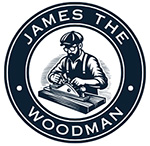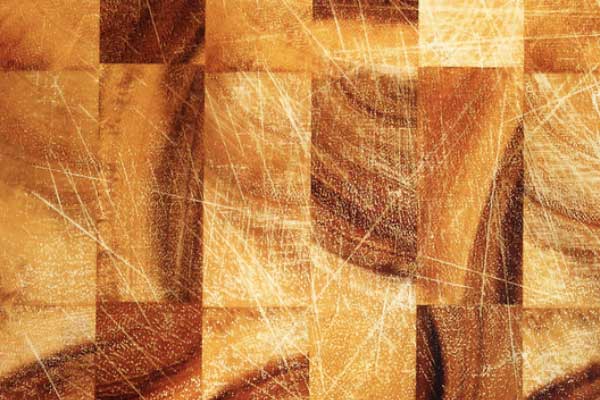Wooden cutting boards have been a staple in kitchens around the world for centuries. Their durability, natural beauty, and effectiveness make them an ideal choice for both professional chefs and home cooks. Among the different types of wooden cutting boards, end grain cutting boards stand out for their unique construction, longevity, and knife-friendly nature. In this article, we will explore what an end grain cutting board is, how it differs from other types, its benefits, how to maintain it, and why it might be the best choice for your kitchen.
What is an End Grain Cutting Board?
An end grain cutting board is a specific type of wooden board made by arranging the wood so that the ends of the wood fibers are facing upward. This means that when you cut on an end grain board, you are cutting into the ends of the wood fibers rather than across them. Typically, end grain cutting boards are made by gluing together small blocks of wood in a checkerboard pattern, which reveals the cross-sections of the wood grain.
This construction method results in a cutting surface that is highly resilient and self-healing. When a knife blade contacts the surface, the wood fibers essentially part around the blade and then close back up once the blade is removed. This not only preserves the sharpness of the knife but also extends the life of the cutting board itself.
Differences Between End Grain and Other Cutting Boards
To understand the unique qualities of an end grain cutting board, it helps to compare it to other types of wooden cutting boards, particularly edge grain and face grain boards.
- Edge Grain Cutting Boards: These are made by gluing together long boards with the edges facing up. Edge grain boards are durable and cost less than end grain boards, but they show knife marks more quickly and are generally harder on knives.
- Face Grain Cutting Boards: These boards display the wide face of the wood. Although they are attractive and often used for serving rather than cutting, they are the least durable option for serious chopping and slicing tasks, as they scar easily and can warp over time.
End grain cutting boards are often heavier, thicker, and more expensive than their edge or face grain counterparts, but their superior performance and durability make them a worthwhile investment for those who value high-quality kitchen tools.
Benefits of Using an End Grain Cutting Board
There are several significant benefits to using an end grain cutting board, making it the preferred choice for many culinary professionals.
Gentle on Knives
One of the most important advantages of an end grain cutting board is its knife-friendly surface. Because the fibers separate and absorb the impact rather than resisting it, knives stay sharper for much longer. This reduces the need for frequent sharpening and enhances overall kitchen efficiency.
Self-Healing Properties
The self-healing nature of the wood fibers helps keep the board looking new for a longer time. Small cuts and scratches are less noticeable because the fibers close back up after being parted by the knife blade. This not only maintains the board’s appearance but also its hygiene, as fewer deep grooves can harbor bacteria.
Durability and Longevity
End grain cutting boards are often more durable than other types. Their robust construction and ability to withstand constant use without significant damage mean that they can last for many years, even decades, with proper care.
Aesthetic Appeal
The checkerboard or mosaic patterns of end grain boards are visually striking. Many people appreciate the artistic quality these boards bring to their kitchens. They can double as beautiful serving platters for cheeses, meats, and other hors d’oeuvres.
Common Wood Types for End Grain Cutting Boards
Different woods can be used to create end grain cutting boards, each with its own unique look and characteristics.
- Maple: Hard maple is a popular choice due to its hardness, closed grain, and resistance to bacteria and moisture.
- Walnut: Walnut offers a rich, dark color and is somewhat softer than maple, which some users prefer for its gentle treatment of knives.
- Cherry: Cherry wood brings a warm, reddish tone and matures beautifully over time, although it is slightly softer than both maple and walnut.
- Acacia: Known for its striking grain patterns and durability, acacia is becoming increasingly popular, though it may require more frequent oiling.
Each type of wood can influence not only the look of the board but also its maintenance needs and performance.
How to Maintain an End Grain Cutting Board
Proper maintenance is crucial to extending the life of an end grain cutting board and keeping it safe and sanitary for food preparation.
Regular Cleaning
After each use, wash the board with warm, soapy water and dry it immediately with a clean cloth. Avoid soaking the board or putting it in a dishwasher, as excessive moisture can cause warping or cracking.
Oiling the Board
Regular oiling is essential to prevent the wood from drying out and cracking. Use a food-safe mineral oil or a specialized cutting board oil. Apply a generous amount, let it soak in for several hours or overnight, and then wipe off the excess. Frequency depends on usage, but a general guideline is once a month or whenever the board looks dry.
Deep Cleaning and Deodorizing
Occasionally, sprinkle coarse salt or baking soda over the board and scrub it with a lemon half to clean and deodorize it naturally. This method also helps maintain the board’s freshness without the use of harsh chemicals.
Storing Properly
Always store the board in a dry place. It’s best to store it upright to ensure even air circulation on all sides, which helps prevent warping.
Are There Any Downsides to End Grain Cutting Boards?
While end grain cutting boards offer many benefits, they are not without a few drawbacks.
- Cost: End grain boards are generally more expensive than other types. Their labor-intensive construction and the amount of wood used contribute to the higher price tag.
- Weight: These boards are heavier and bulkier, which can make them more difficult to move, clean, and store.
- Maintenance: They require consistent oiling and careful handling to maintain their integrity and appearance.
For many users, however, the advantages far outweigh these minor inconveniences, especially for those serious about their culinary craft.
Conclusion
End grain cutting boards represent a superior choice for those seeking durability, beauty, and knife-friendliness in their kitchen tools. Although they require a higher initial investment and more maintenance than other types, their longevity, performance, and self-healing properties make them an invaluable addition to any kitchen. Whether you are a professional chef or a home cook who values quality, an end grain cutting board is a worthy centerpiece for your food preparation space. With proper care, it will serve you well for many years, providing both functional utility and timeless beauty.

